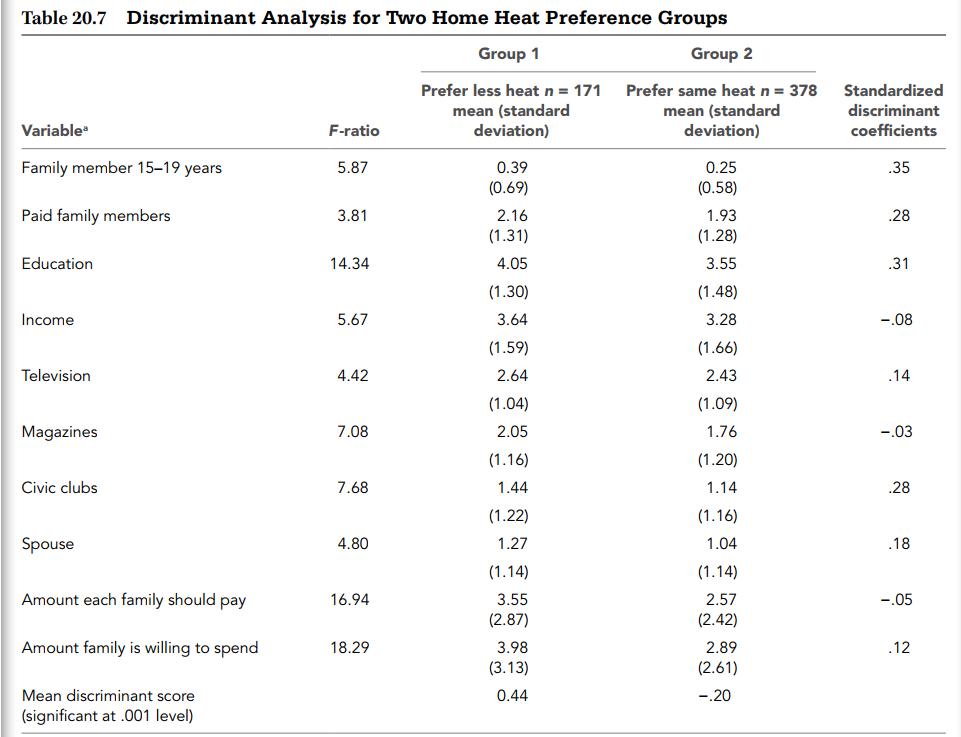In view of the problem of pollution from energy sources, it was felt that a need existed
Question:
In view of the problem of pollution from energy sources, it was felt that a need existed for an in-depth baseline study of consumer attitudes and perceptions of energy-related issues. As a result, a study was conducted in February 1994 (at the peak of the pollution problems) on a variety of energy-related issues.
A mail questionnaire was sent to 2,500 residents of three medium-sized cities. A total of 922 respondents returned the questionnaire. A sample of 574 of the respondents was selected for the initial analysis. One key question asked if the respondent would be willing to give up degrees of heat in the home in order to achieve less air pollution, assuming that such a tradeoff were possible. One analysis was to determine how those willing to give up some heat in their homes differed from those who were not willing. Accordingly, the two groups are profiled in Table 20.7 on the basis of 10 variables.
The table shows the mean values for each group, the F-ratio, which reflects the statistical significance of the difference between the means, and the standardized discriminant
coefficients. Interpret the table elements. What is the appropriate interpretation of each term? Which variables are the most helpful in identifying the characteristics of the group? What are the appropriate hypothesis tests to be used in the analysis?

Step by Step Answer:

Marketing Research
ISBN: 9781119497639
13th Edition
Authors: V. Kumar, Robert P. Leone, David A. Aaker, George S. Day





